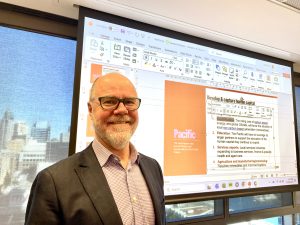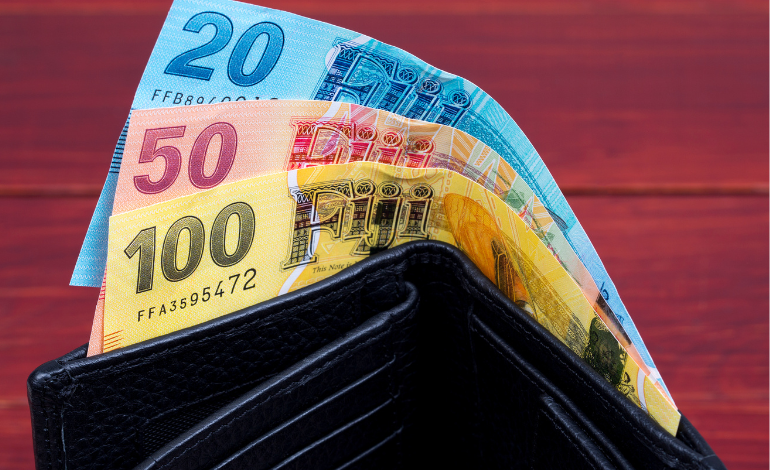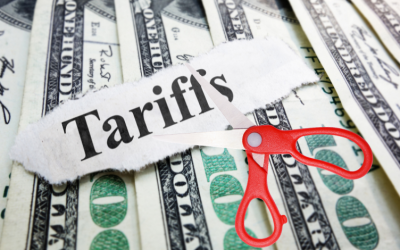
Westpac Director and Senior Economist Justin Smirk.
Westpac Director and Senior Economist Justin Smirk addressed the Executive Committee members of the Australia Fiji and Australia Pacific Islands Business Councils and invited guests in Sydney last month. The executive committee meetings were hosted at the Westpac offices.
Here is a summary from his Fiji update:
Fiji’s Economic Update: Mid-2024 Overview
Fiji’s economy has been navigating a challenging post-pandemic recovery, marked by both progress and ongoing hurdles. As of mid-2024, the nation has seen mixed economic indicators, reflecting the complexities of rebuilding after the global disruptions caused by COVID-19 and other external factors.
Growth and Inflation
Fiji’s economic growth in 2024 has been revised downward by both the Reserve Bank of Fiji (RBF) and the Ministry of Finance. The revisions are attributed to several factors, including slower-than-expected recovery in key sectors like tourism, which, while improving, has not returned to pre-pandemic levels. Visitor arrivals in the first half of 2024 exceeded expectations but still face the challenges of global economic uncertainties.
Inflation remains a concern, with consumer prices increasing by 5.8 per cent in May 2024. This rise is driven by higher costs of imported goods, particularly food and fuel, exacerbated by global supply chain disruptions and the geopolitical impacts of the Ukraine crisis, which have led to increased energy and food prices globally.
Fiscal Performance
Fiji’s fiscal landscape has been marked by cautious optimism, as the government announced the FY2024-2025 national budget on June 28. The budget aims to balance the need for continued stimulus to support economic recovery with the necessity of fiscal prudence. The government’s spending focuses on infrastructure development, healthcare, and social welfare, while revenue measures are designed to be more progressive to maintain fiscal stability.
Foreign reserves have remained stable, providing a buffer against external shocks. However, banks’ deposits are at their lowest since the end of 2021, indicating potential liquidity concerns that could affect lending and investment in the coming months.
Sectoral Performance  Tourism, a cornerstone of Fiji’s economy, has shown resilience, but the sector’s recovery is uneven. While visitor numbers have improved, spending per tourist remains below pre-pandemic levels, reflecting broader global economic conditions. Other sectors, such as agriculture and manufacturing, are also facing challenges, particularly in terms of logistics and the rising costs of inputs like fertilisers.
Tourism, a cornerstone of Fiji’s economy, has shown resilience, but the sector’s recovery is uneven. While visitor numbers have improved, spending per tourist remains below pre-pandemic levels, reflecting broader global economic conditions. Other sectors, such as agriculture and manufacturing, are also facing challenges, particularly in terms of logistics and the rising costs of inputs like fertilisers.
The financial sector remains robust, with steady credit growth supported by accommodative monetary policies from the RBF. However, the broader economic outlook is tempered by global headwinds, including inflationary pressures and slowing growth in key trading partners like Australia and New Zealand.
Looking Ahead
Fiji’s economic future hinges on several factors, including the global economic environment, the pace of recovery in tourism, and the effectiveness of government policies in stimulating domestic demand. The government’s focus on infrastructure and social spending is expected to provide some support, but long-term growth will depend on addressing structural issues, including improving the business environment and increasing productivity across sectors.



